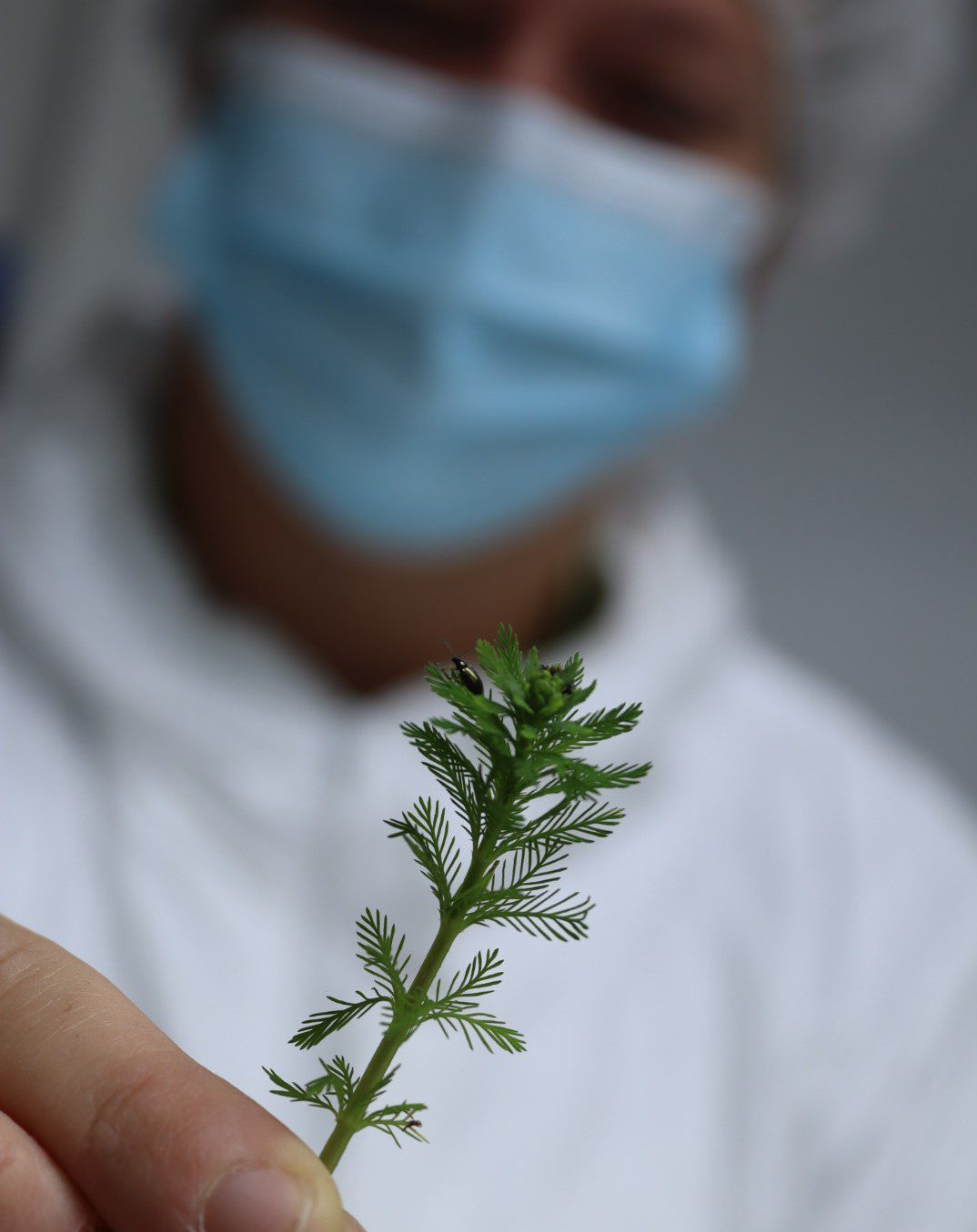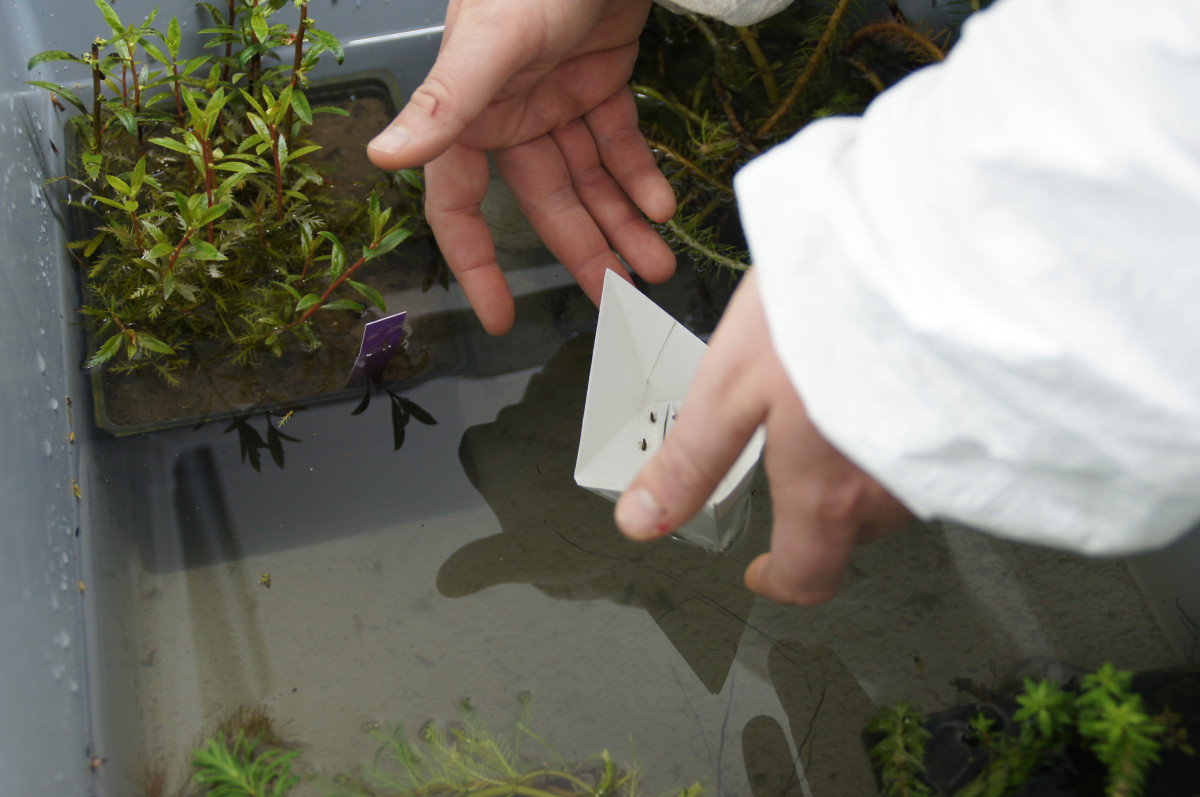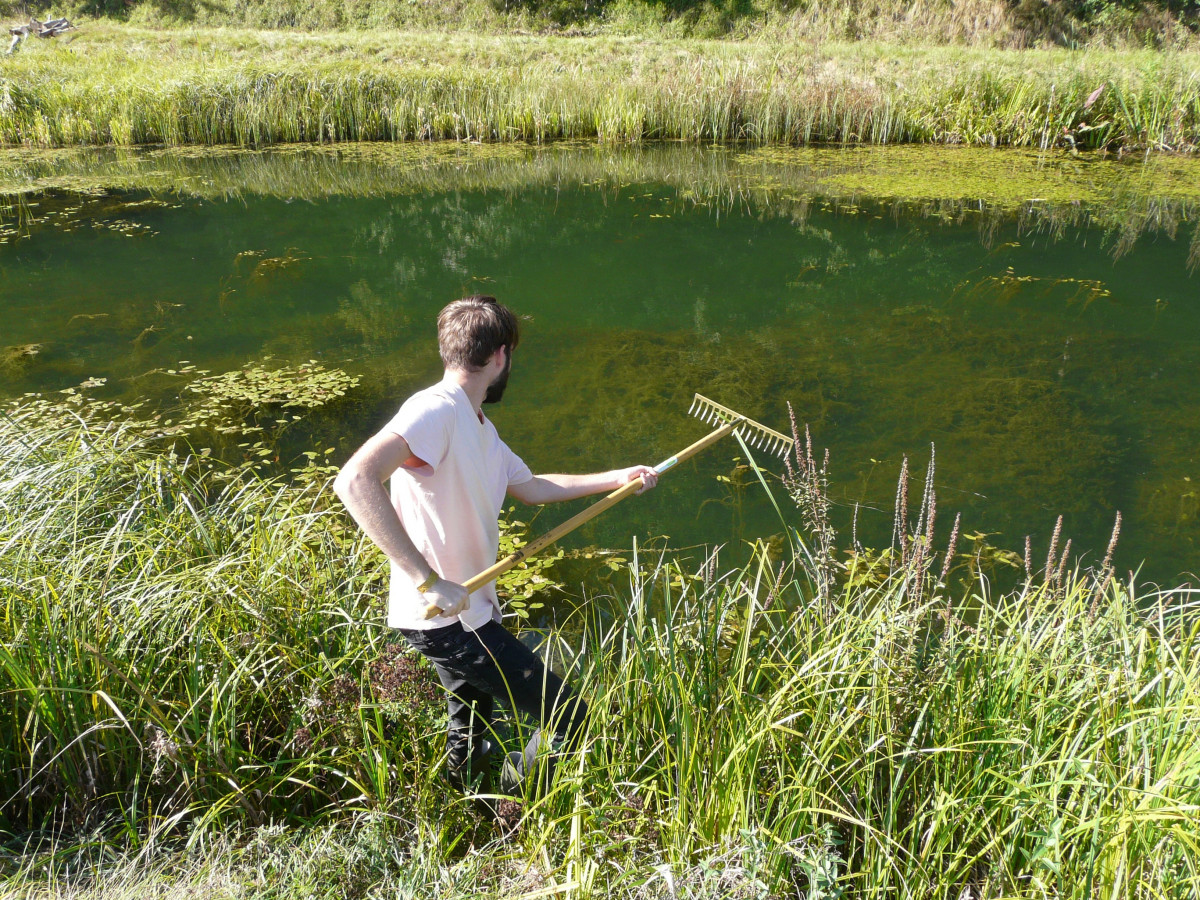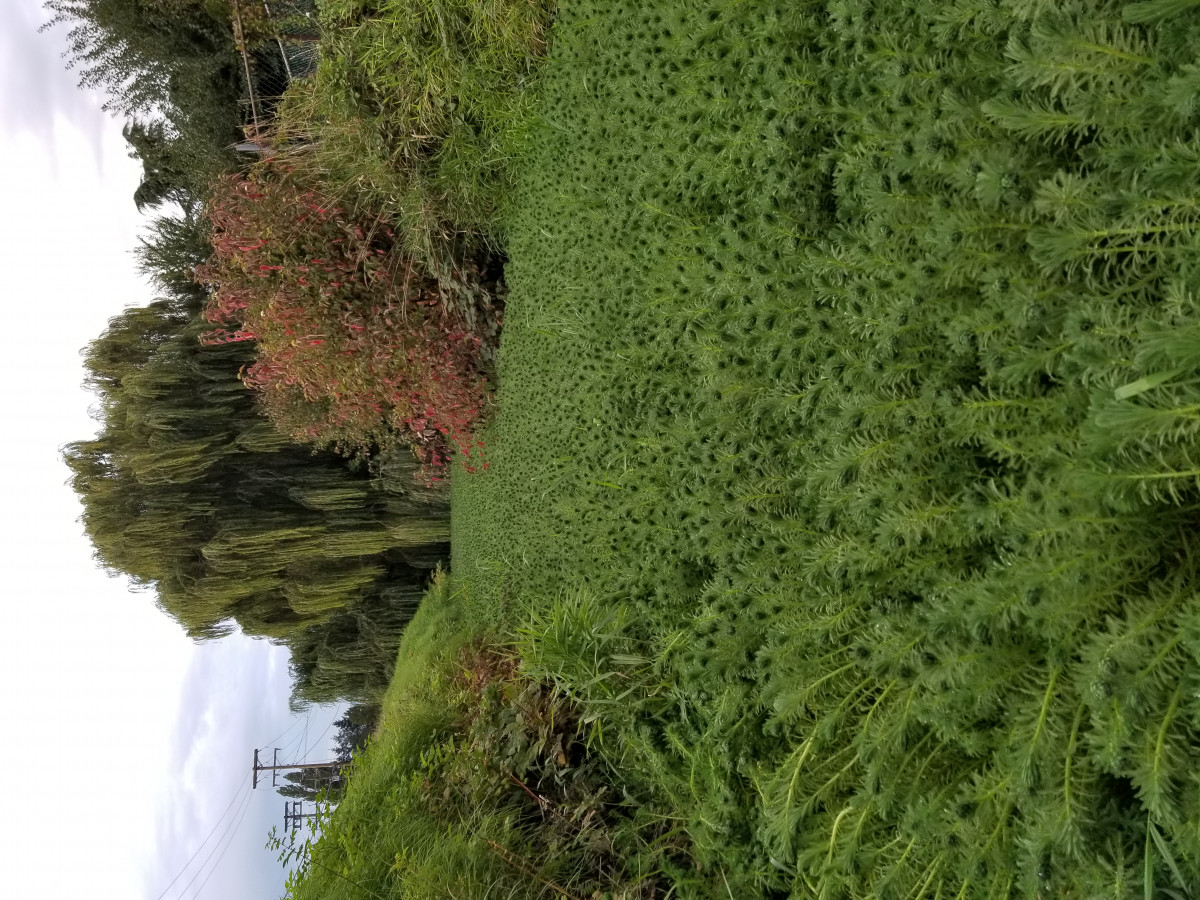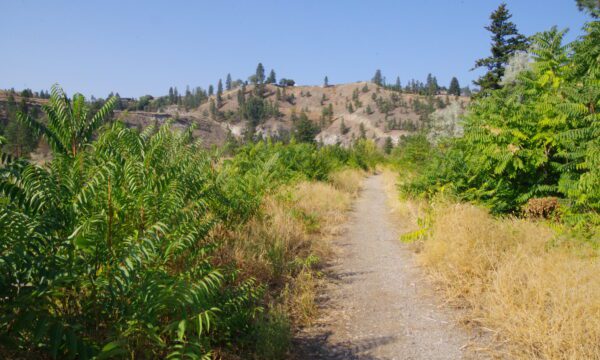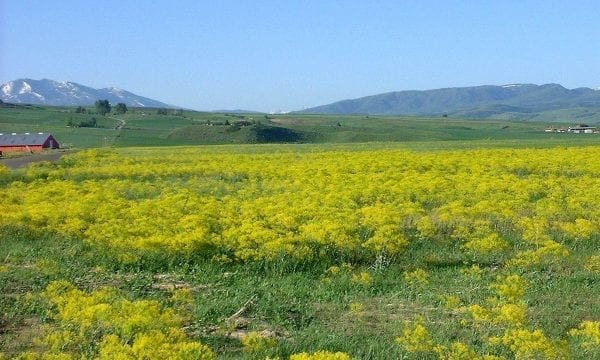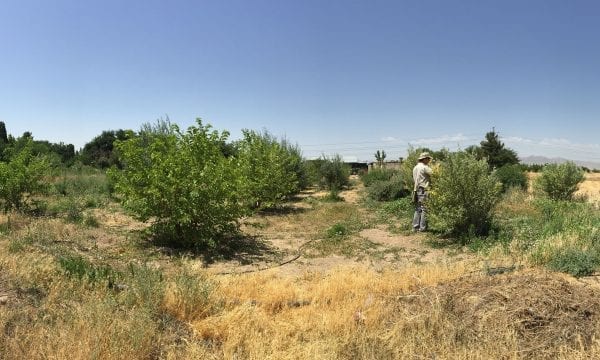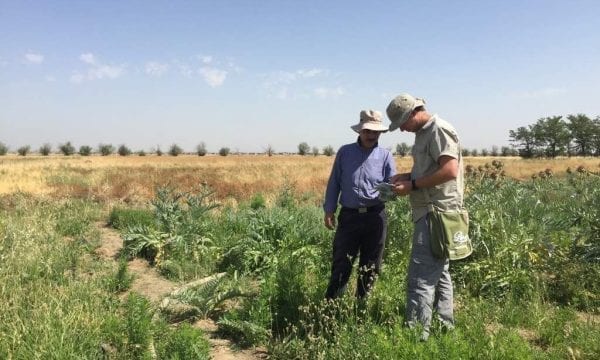Biological control of parrot's feather in North America
Parrot’s feather, Myriophyllum aquaticum, is a very popular garden and ornamental plant and has a long history of invasion worldwide. It was first recorded in Canada in 1980 from British Columbia and has since been recorded in the Lower Mainland and in the USA. Parrot’s feather forms dense impenetrable mats which affect stream flow, resulting in reduced native species’ richness at local scales, reduced water quality and habitat quality for fish and wildlife, and impacts on human activities. Due to the negative impacts, management of this species is required and a sustainable option is biological control. A biological control programme against parrot’s feather is already well-developed in South Africa and this project aims to investigate the potential for use in western North America.
Project Overview
So, what’s the problem
Parrot’s feather is a noxious weed which has invaded the Lower Mainland and Vancouver Island, British Columbia and extended into the western USA, including Washington, Oregon, Idaho and California. In the invaded range, parrot’s feather has the ability to form dense impenetrable mats which affect stream flow, reduce native species’ richness, reduced water quality and habitat quality for fish and wildlife, and negatively impact human activities. In North America, it is considered a serious weed in shallow streams, irrigation ditches, ponds and shallow lakes. In urban settings, it significantly increases the risk of flooding when it invades canals, ditches and storm drains that would typically divert flood waters.
Once established, this plant is extremely difficult to control. Any mechanical method can fragment plants, favouring the growth and spread of this species. In addition, herbicides have been difficult to employ due to restrictions in use in sensitive wetland habitats and the fact that the plant has an emergent and submerged form.
Biological control of this species was implemented in South Africa in the early 1990s with the release of the leaf-feeding flea beetle, Lysathia sp. which proved to be extremely effective and no additional agents were required. Despite this success, no other country has implemented biological control against this weed.
What is this project doing?
In 2020, CABI Switzerland initiated a project to evaluate the potential for biological control of parrot’s feather in western North America.
There are three potential biological control agents that are worth further investigation: the leaf-feeding flea beetle, Lysathia sp. and the stem-mining weevil, Listronotus marginicollis are species native to South America and have been developed as part of the biological control programme for parrot’s feather in South Africa. The third, a North American native weevil Phytobius vestitus, was recently identified in Louisiana damaging parrot’s feather to the extent that it was managing parrot feather in certain locations. This project aims to evaluate these agents.
All three agents have the potential to be effective and safe biological control agents. However, before any agent can be considered for safe release in western North America, host-range testing of plant species, relevant to the region, will need to be conducted.
Climate is considered a potential limiting factor, however, preliminary Climex models provided a moderate fit to some sites where both Lysathia sp. and L. marginicollis occur. Nevertheless, it needs to be kept in mind that Vancouver has longer winters than those experienced in South Africa and Argentina. In addition to the host range testing, this project will explore the potential climatic compatibility of these agents to Canada which will give insights into the efficacy of the agents.
Results
Currently, we have imported two potential agents, Lysathia sp. and P. vestitus, into the CABI quarantine. Lysathia sp. was obtained from the Centre of Biological Control in South Africa, while P. vestitus was collected in Louisiana in collaboration with Dr Rodrigo Diaz.
Since Lysathia sp. testing started in 2021, 11 plant species within the Haloragaceae and one from the Onagraceae have been tested under no-choice conditions. Of these, seven species have been tested under choice conditions. Under choice conditions, Lysathia sp. generally shows a clear preference for parrot’s feather. In addition to the host-range testing, the biology (longevity and fecundity) of Lysathia sp. has been studied in more detail.
The rearing of P. vestitus has been more complicated than initially anticipated and the first few months were used to establish a good rearing method under quarantine conditions. In 2022, no-choice oviposition tests have been conducted with eight plant species in the Haloragaceae, while single-choice oviposition tests were performed only for Proserpinaca palustris. So far, no-choice tests suggest a wide host range while single-choice tests with P. palustris tend to narrow it. We are currently developing methods for no-choice larval development tests. Moreover, host-finding behaviour experiments have been set up with a Y-tube olfactometer system with five plant species already tested. First results suggest that P. vestitus is significantly attracted to parrot’s feather and indifferent to other non-target plant species, with the exception of M. crispatum under no-choice conditions.
Donors
British Columbia Ministry of Forests, Canada
Washington Department of Ecology
Washington Department of Agriculture

